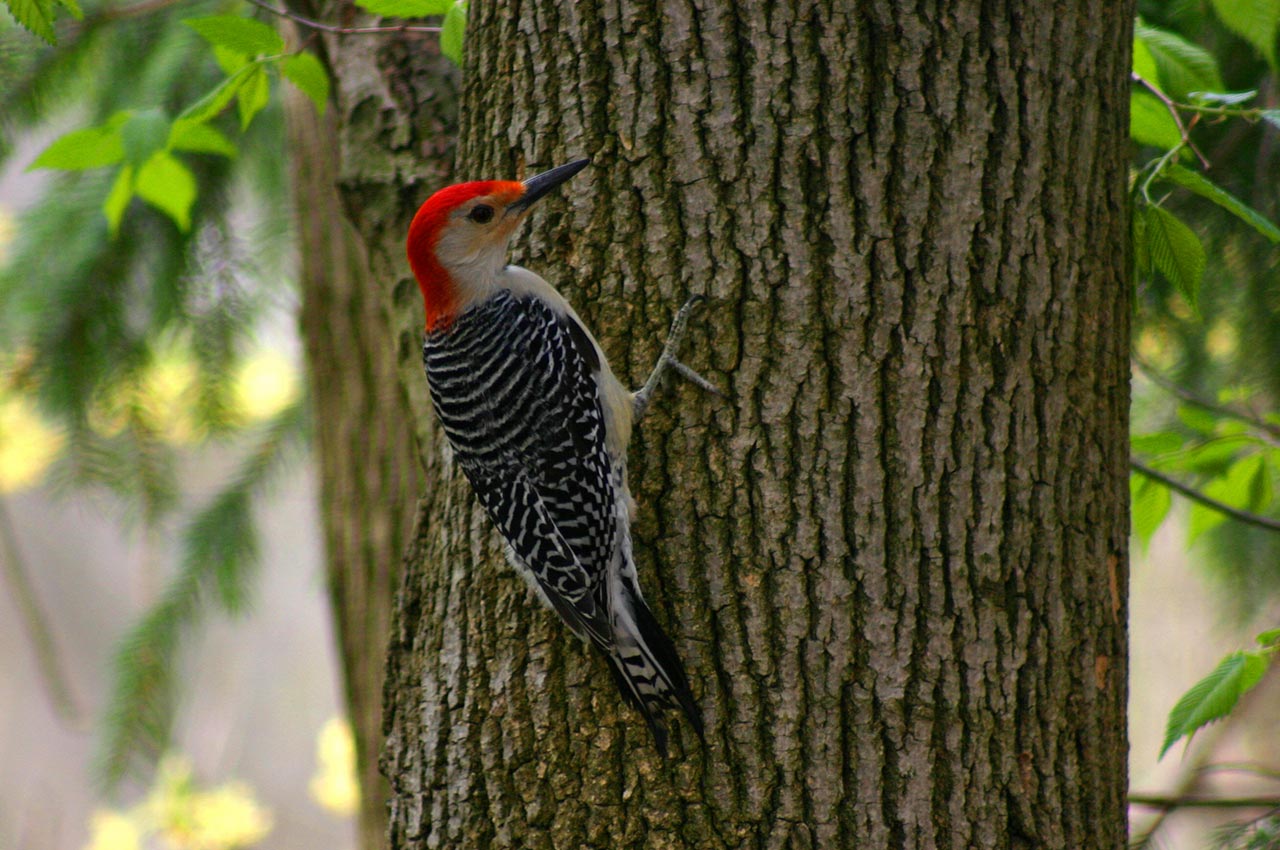Woodpeckers: A Comprehensive Overview to Understanding These Unique Birds
Woodpeckers, with their distinctive actions and physical attributes, have actually long captivated the curiosity of ornithologists and nature lovers alike. As we discover the elaborate composition, varied species, and eco-friendly value of woodpeckers, a deeper admiration for these unique birds and the secrets they hold unravels.

Woodpeckers' Drumming Habits
Woodpeckers exhibit a balanced and accurate drumming behavior that offers various essential functions in their day-to-days live. This actions is mostly associated with interaction, area protection, and foraging. The distinctive drumming audio is created by the fast pecking of their beaks versus difficult surfaces such as tree trunks, branches, or perhaps steel objects.
Communication is an essential aspect of woodpecker actions, and drumming plays a considerable duty in this process. Woodpeckers use drumming to develop their presence, attract companions, and maintain call with their companions and spawn. The frequency, intensity, and duration of drumming sequences convey details messages to various other woodpeckers in the area.
In enhancement to communication, woodpeckers utilize drumming behavior for region defense. Woodpeckers in Florida. The loud and repetitive drumming acts as a cautioning to prospective burglars, signifying that the location is already claimed. By developing their area through drumming, woodpeckers minimize the possibility of disputes over valuable resources such as food and nesting websites
Moreover, woodpeckers additionally use drumming as a foraging strategy. The balanced pecking helps them find bugs hiding under the bark of trees by developing vibrations that interfere with the prey's cover-up. This behavior showcases the flexibility and resourcefulness of woodpeckers in utilizing their drumming skills for numerous crucial purposes.
Distinct Adjustments for Tree Climbing
Having actually understood the art of drumming to communicate, protect area, and forage, woodpeckers have actually advanced one-of-a-kind adjustments that promote their exceptional climbing abilities in their arboreal environments. One crucial adjustment is their specialized feet. Woodpeckers have zygodactyl feet, with 2 toes aiming forward and two toes directing backwards. This setup offers a strong grasp on the vertical surfaces of trees, allowing them to stick effortlessly while foraging for bugs or drumming. Additionally, woodpeckers possess rigid tail feathers that serve as a prop to support their bodies as they climb. These tail plumes provide security and equilibrium, allowing woodpeckers to navigate up tree trunks with precision and dexterity.
Moreover, woodpeckers have effective neck muscles and a special head structure that help in their climbing capabilities. Their strong neck muscular tissues allow them to rapidly peck at tree bark without experiencing whiplash, while their thick head and tiny mind act as shock absorbers, securing them from the effect of duplicated drumming. These adjustments jointly enable woodpeckers to browse the vertical globe of trees with performance and poise.

Function of Woodpeckers in Ecological Communities
By foraging for insects under the bark of trees, woodpeckers aid regulate parasite populaces, preventing outbreaks that could harm the total health of the woodland. Furthermore, woodpeckers create tooth cavities in trees that offer as important nesting websites for a range of other bird varieties, advertising biodiversity within the community.
Additionally, the drumming and vocalizations of woodpeckers play an essential role in communication and content area facility. These audios not just serve to bring in friends but additionally aid define limits between different woodpecker areas, minimizing disputes and promoting a harmonious coexistence within the woodland area. On the whole, the visibility of woodpeckers in woodland environments highlights their relevance as keystone species, influencing the characteristics and functioning of these environments in complex means.
Anatomy: Specialized Beaks and Feet
In the intricate internet of woodland ecological communities, the specialized beaks and feet of woodpeckers are necessary adjustments that enable them to fulfill their critical ecological functions. Woodpeckers have unique physiological attributes that are particularly created to aid them in their foraging and nesting behaviors.
One of the most unique function of woodpeckers is their solid, chisel-shaped beaks. These beaks are completely adapted for exploration into wood to reveal pests, larvae, and sap covert under the bark of trees. The solid muscle mass and tough framework of their beaks enable woodpeckers to peck at a price of up to 20 times per secondly without creating damage to their skulls.
Additionally, woodpeckers have specialized feet that aid in their acrobatic climbing up abilities. Their feet have two toes aiming onward and 2 toes important source aiming backward, supplying a strong grip on upright surface areas (Woodpeckers in Florida). This special foot setup, in addition to stiff tail feathers that work as an encouraging prop, enables woodpeckers to hold on to tree trunks and branches effortlessly while they look for food or excavate nesting tooth cavities
Woodpecker Variety Variety
Woodpeckers are a diverse team of birds discovered throughout different communities worldwide, with over 200 recognized varieties showing adjustments to various settings. Woodpeckers check that have actually evolved to occupy an array of settings, from woodlands and timberlands to meadows and deserts, each providing one-of-a-kind challenges that have actually affected the evolution of unique woodpecker species.
An additional adding variable to woodpecker types variety is their specialized feeding behaviors. Various varieties have advanced to exploit numerous food sources, such as insects, tree sap, fruits, and nuts, causing the development of particular adaptations in beak shape, dimension, and stamina. These adjustments make it possible for woodpeckers to forage efficiently in their corresponding environments, minimizing competitors amongst varieties and promoting particular niche differentiation. Furthermore, geographic isolation and historic elements have played a function in shaping the distribution and diversity of woodpecker species, resulting in the vast array of specialized adjustments seen in these fascinating birds.

Conclusion
In verdict, woodpeckers are remarkable birds that show special drumming behavior, specialized adaptations for tree climbing, and play essential roles in ecosystems. With a diverse range of woodpecker species discovered worldwide, these birds are essential for maintaining the wellness and equilibrium of woodlands and forests.